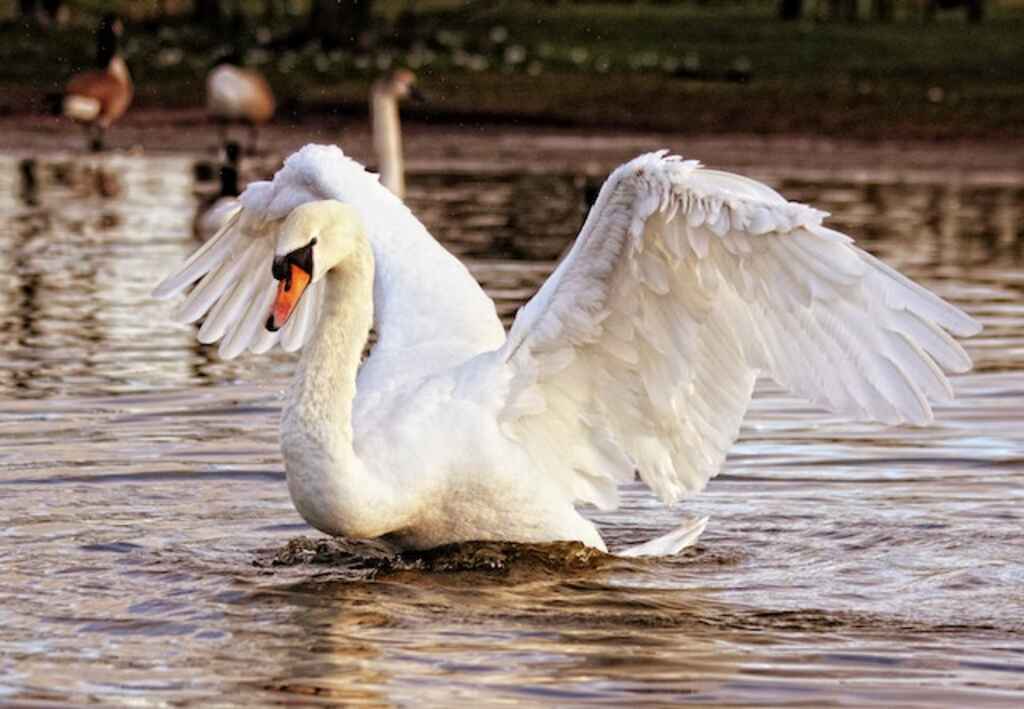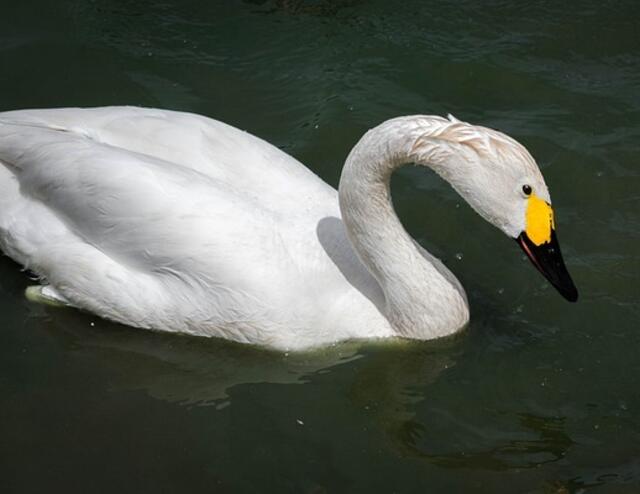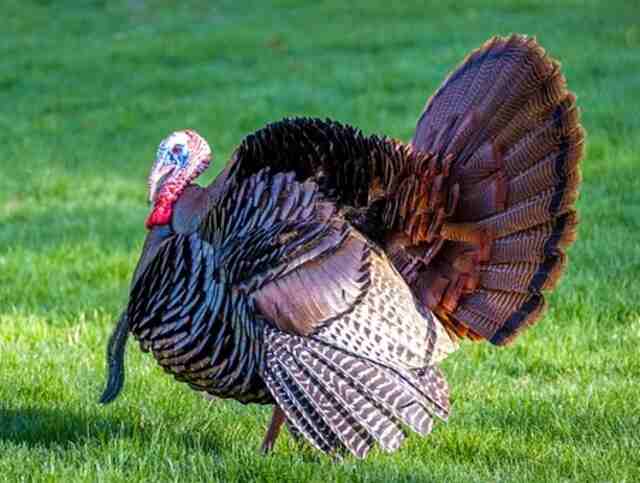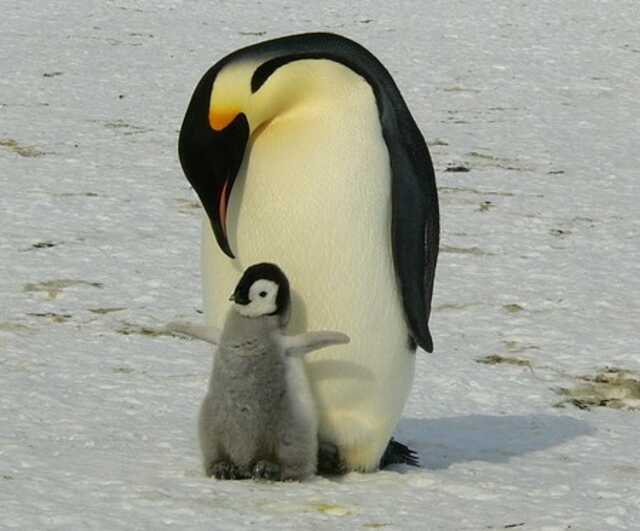In this article, we will explore what birds have the most feathers? And why feathers are so important to birds? We will also answer some frequently asked questions about feathers and bird behavior. So, let’s dive in and learn more about these fascinating structures and the birds that depend on them.
Table of Contents
- 1 What Birds Have The Most Feathers?
- 2 Definition of Feathers
- 3 Importance of Feathers in Birds
- 4 Types of Feathers and their Meanings
- 5 Bird Species with the Most Feathers
- 6 Ostriches
- 7 Swans
- 8 Peafowls
- 9 Turkeys
- 10 Penguins
- 11 Other Birds with a High Number of Feathers
- 12 Frequently Asked Questions
- 12.1 What was the first feathered bird?
- 12.2 What bird has the biggest feathers?
- 12.3 What bird has the longest tail feathers?
- 12.4 What is the largest feathered bird in history?
- 12.5 What is the thickest bird in the world?
- 12.6 What are the strongest feathers?
- 12.7 What is the rarest bird to see in the world?
- 12.8 Which is the most proud bird?
- 12.9 What is the rarest feather?
- 12.10 What are the five feathered birds?
- 12.11 What bird has no feather in its neck?
- 12.12 What is the darkest bird ever?
- 12.13 Which bird has over 25,000 feathers on its body?
- 12.14 How many feathers does a pigeon have?
- 12.15 How many feathers does a Robin have?
- 12.16 How many feathers does a peacock have?
- 12.17 How many feathers does a crow have?
- 12.18 How many feathers does an owl have?
- 12.19 What part of the turkey has the most feathers?
- 12.20 Which bird has the most feathers per square inch?
- 12.21 What bird has the highest density of feathers?
- 12.22 What bird has the most beautiful feathers?
- 12.23 What is the expensive bird feather?
- 12.24 Which country has the most birds?
- 12.25 What is the rarest feather color?
- 12.26 What is the most luxurious feather?
- 12.27 How many feathers does an emperor penguin have?
- 12.28 How many feathers does a penguin have per square inch?
- 12.29 Which birds have feathers?
- 13 Conclusion
- 14 Author
What Birds Have The Most Feathers?
It’s difficult to determine which birds have the most feathers, as the number of feathers can vary greatly depending on the species and individual bird. However, generally, larger birds tend to have more feathers than smaller birds, as they require more feathers to cover their larger surface area.
For example, swans can have up to 25,000 feathers or more, while a small songbird may only have around 1,000 feathers. Additionally, some birds, such as ostriches, have very large feathers, while others, like hummingbirds, have very small feathers in large quantities.
Definition of Feathers
Feathers are highly specialized structures that cover the bodies of birds. They consist of a central shaft, called the rachis, which supports a series of barbs. The barbs, in turn, have tiny hook-like structures called barbules that interlock, creating a flat, lightweight surface that provides insulation, lift, and protection.
Importance of Feathers in Birds
Feathers are critical to the survival and well-being of birds. They serve several important functions, including:
- Insulation: Feathers help birds maintain their body temperature by trapping a layer of air close to the skin. This insulation is particularly important for birds that live in cold environments.
- Flight: Feathers are essential for flight, enabling birds to generate lift and maneuver through the air. Different types of feathers serve different functions during flight, from the large, strong primary feathers on the wings to the smaller, more flexible feathers on the tail.
- Attracting Mates: Many bird species use feathers to attract mates. Male birds often have brightly colored or ornate feathers that they display during courtship rituals.
- Protection: Feathers can also provide protection for birds. Some species, such as ostriches and emus, have long, sturdy feathers that help protect them from predators.
Types of Feathers and their Meanings
Bird feathers serve a variety of functions beyond their obvious aesthetic appeal. In fact, the different types of feathers on a bird’s body serve different purposes. Here are some of the main types of bird feathers and their meanings:
- Down feathers – These are the soft and fluffy feathers closest to a bird’s skin. They help to insulate and regulate body temperature, keeping birds warm in cold weather.
- Contour feathers – These feathers give birds their shape and provide protection from wind and rain. They are long and pointed, with a vane on either side, and are arranged in overlapping layers to form a smooth, aerodynamic surface.
- Flight feathers – These feathers are found on a bird’s wings and tail, and are responsible for its ability to fly. They are strong and stiff, with a thick central shaft and a vane that is flat on one side and curved on the other.
- Semiplume feathers – These feathers are similar to down feathers, but are larger and have a more defined central shaft. They help to insulate and fill out a bird’s body, and also provide some aerodynamic lift.
- Filoplume feathers – These feathers are small and hair-like, and are found near the base of larger feathers. They provide sensory information to a bird about the position and movement of its feathers.
- Bristle feathers – These feathers are short, stiff, and often found around a bird’s face. They provide protection for the eyes and other sensitive areas, and also help to channel food into a bird’s mouth.
Overall, bird feathers are incredibly versatile and important structures that help birds survive in their environments. Each type of feather has a specific function that contributes to a bird’s overall health and well-being.
Bird Species with the Most Feathers
When it comes to the bird species with the most feathers, one of the first that comes to mind is the ostrich. Ostriches are the largest living bird species, and they are also known for having the largest feathers of any bird species. Let’s take a closer look at the characteristics, adaptations, and uses of ostrich feathers.
Ostriches
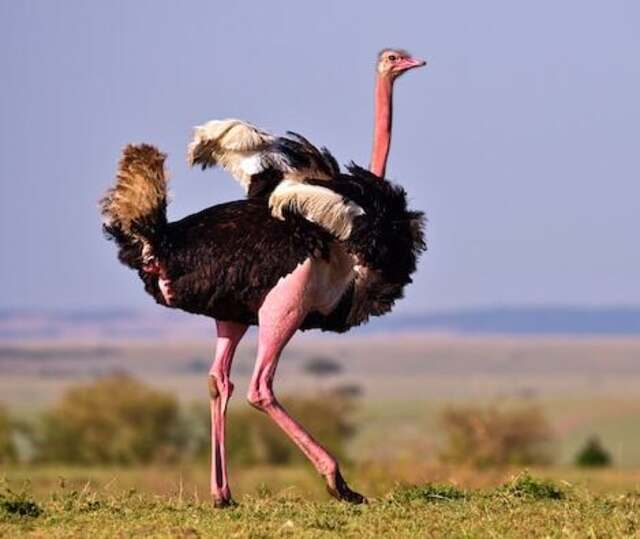
Ostriches are known for having the largest feathers of any bird species. Their feathers can grow up to 18 inches long and are used for a variety of purposes.
Characteristics of ostrich feathers
Ostrich feathers are unique in that they are soft and downy on the inside, while the outside is made up of stiff and glossy barbs. The feathers are also very strong, which helps the ostrich to maintain its balance while running.
Additionally, ostrich feathers are plume-like in shape and come in a range of colors, including black, white, and gray.
Adaptations of ostrich feathers
Ostrich feathers have evolved to help the birds regulate their body temperature in their harsh desert environment. The downy feathers trap air and create a layer of insulation that keeps the ostrich warm in cold weather and cool in hot weather.
In addition, the stiff barbs on the outside of the feather help to protect the ostrich from the sun’s rays and prevent sunburn.
Uses of ostrich feathers
Ostrich feathers have been used for centuries by humans for a variety of purposes. They have been used for decoration in clothing, hats, and jewelry, as well as for ceremonial purposes. The feathers are also used in the fishing industry as lures, and in the aviation industry to help regulate airflow over airplane wings.
Additionally, ostrich feathers have been used as dusters due to their soft texture and ability to attract and hold dust.
Overall, ostrich feathers are unique and versatile, providing the ostrich with vital adaptations for survival in their environment and also providing humans with a variety of uses.
Swans
Characteristics of swan feathers
Swans are known for their majestic beauty and elegance, and their feathers play a crucial role in this. Swan feathers are predominantly white, but some species have black feathers as well.
The feathers are soft and fluffy, but also have a degree of firmness and durability that allows them to maintain their shape and provide insulation.
Adaptations of swan feathers
Swan feathers have several adaptations that make them ideal for their environment. For example, the feathers have a water-repellent coating that helps to keep the birds dry when they swim or float on water. Additionally, the feathers are layered to create a thick, insulating barrier against the cold.
This allows swans to live comfortably in colder climates and even migrate to areas with harsher weather conditions. Swans also have specialized feathers for flight, known as remiges and rectrices. These feathers are larger, stiffer, and more aerodynamic than the body feathers, and they work together to provide lift and control during flight.
Uses of swan feathers
In addition to their functional uses, swan feathers have been used for decorative purposes for centuries. Swan feathers were once a popular choice for quills used for writing, due to their firmness and durability. Today, swan feathers are still used for decorative purposes, such as in costumes or fashion accessories.
Peafowls
Peafowl feathers are renowned for their vivid colors and unique structures. Male peafowl, or peacocks, are particularly known for their showy, iridescent plumage that is used to attract mates and deter rivals.
Characteristics of peafowl feathers
Peafowl feathers are made up of a central shaft, or rachis, from which numerous individual feathers, or barbs, branch out. Each barb is further divided into smaller branches called barbules, which are held together by tiny hooks called barbicels. The barbs are arranged in a flat, fan-like structure, giving the feather its distinctive shape.
What sets peafowl feathers apart from other bird feathers is their brilliant colors and iridescence. The feathers contain microscopic structures called photonic crystals that reflect and refract light, creating a dazzling display of colors that shift and change depending on the angle of the light and the viewer’s perspective.
Adaptations of peafowl feathers
Peafowl feathers serve a variety of functions for these birds. For male peafowl, their colorful feathers are a primary means of attracting mates. During courtship displays, male peacocks fan out their tail feathers and strut around, displaying their plumage to potential mates. The more vivid and iridescent the feathers are, the more appealing they are to female birds seeking a mate.
In addition to their role in courtship, peafowl feathers also serve as a means of communication and defense. When threatened, male peafowl will raise and fan out their tail feathers, creating a large and intimidating display. The sudden appearance of bright colors and iridescence can startle predators and give the peafowl a chance to escape.
Uses of peafowl feathers
Peafowl feathers have been prized for centuries for their beauty and decorative value. They have been used in clothing, jewelry, and other accessories, as well as for home decor and art. In some cultures, peafowl feathers are believed to bring good luck or ward off evil spirits.
Today, peafowl feathers are still used in fashion and decor, but there is growing concern about the impact of the feather trade on wild peafowl populations. Some countries have enacted laws and regulations to protect peafowl and restrict the trade in their feathers.
Turkeys
Turkeys are a type of bird that are found in many parts of the world, including North America, Europe, and Asia. They are known for their distinctive appearance, which includes colorful plumage and a fleshy protuberance on their necks called a “snood.” In addition to their unique appearance, turkeys also have special feathers that are adapted for various purposes.
Characteristics of Turkey feathers
Turkeys have a variety of feathers, each with its own unique characteristics. Their primary feathers are the large, strong feathers on their wings that are essential for flight. These feathers are long and tapered, with a curved shape that helps to provide lift and stability during flight.
Turkeys also have secondary feathers, which are shorter and help to provide additional lift and maneuverability in flight. The tail feathers of turkeys are also important, as they play a role in courtship displays and help to attract mates.
Adaptations of Turkey feathers
In addition to their flight feathers, turkeys also have specialized feathers that are adapted for other purposes. For example, turkeys have down feathers that provide insulation and help to keep them warm in cold weather.
They also have bristle feathers around their eyes and beaks that help to protect their eyes from dust and other debris. Additionally, turkeys have iridescent feathers that can change color depending on the angle of the light, which is used to attract mates during courtship displays.
Uses of Turkey feathers
Turkey feathers have a variety of uses, both in the natural world and in human culture. In the wild, turkeys use their feathers for insulation, camouflage, and courtship displays.
Humans have also found a number of uses for turkey feathers over the years, including for decorative purposes, as writing quills, and for making arrows.
Today, turkey feathers are still used for a variety of crafts and art projects, and are also used in the fashion industry to create unique and eye-catching designs.
Penguins
Characteristics of penguin feathers
Penguin feathers are specialized to help them survive in their cold and aquatic environments. These feathers are tightly packed and overlap each other like shingles on a roof, creating a waterproof barrier that keeps the penguin’s skin dry.
Penguins have around 70 feathers per square inch, which is more than any other bird. Their feathers are also unique because they lack the “hook” structure found in most bird feathers that allow them to interlock, which enables the penguins to move through the water with ease.
Adaptations of penguin feathers
Penguin feathers are essential to their survival, and they have evolved several adaptations to make them more effective. Penguins have a preen gland that produces an oil that they spread over their feathers to improve their waterproofing ability.
They also have a unique ability to trap air between their feathers, which acts as an insulator to keep them warm in cold water.
Additionally, when penguins molt, they do it quickly and in a short period, which minimizes the amount of time they spend without feathers and reduces their vulnerability to predators and the harsh elements.
Uses of penguin feathers
Aside from keeping penguins warm and dry, their feathers have additional uses. For example, penguins use their feathers to attract mates during breeding season. Some penguin species have brightly colored feathers on their heads and necks that they use to attract a mate.
Penguins also use their feathers for communication, such as when they display their feathers to establish dominance or when they shake their feathers to signal aggression.
Additionally, penguin feathers have been used in scientific research, as they can reveal information about the penguin’s diet, migration patterns, and exposure to pollutants.
Other Birds with a High Number of Feathers
Characteristics of their Feathers
Aside from ostriches, swans, peafowls, and penguins, other birds also have a high number of feathers. Some of these birds include:
Herons: Herons are known for their long and elegant feathers. These feathers are used for display during courtship and breeding.
Egrets: Egrets have long and wispy feathers that are used for display during courtship. These feathers are also prized for their use in fashion.
Flamingos: Flamingos have unique feathers that are used to filter food from the water. These feathers are also used for display during courtship.
Macaws: Macaws have brightly colored feathers that are used for display during courtship. These feathers are also prized for their use in fashion.
Adaptations of their Feathers
The adaptations of feathers in these birds vary depending on their needs. For instance, herons and egrets have long feathers that are used for display during courtship.
Flamingos have feathers that are used to filter food from the water. Macaws have brightly colored feathers that are used for display during courtship.
Uses of their Feathers
Aside from display during courtship, feathers of these birds are also used in fashion, particularly in the making of hats and clothing. Some feathers, such as those of flamingos, are also used in the food industry as natural food colorants.
Feathers per square inch for each bird
The number of feathers per square inch varies among bird species. For instance, herons have an average of 6 feathers per square inch, while flamingos have an average of 400 feathers per square inch.
Macaws have an average of 1,000 feathers per square inch, making them one of the most feather-dense bird species.
It is important to note that the number of feathers per square inch may vary within a species, depending on the age, sex, and health of the bird.
| Bird Species | Feathers per Square Inch | Total Feather Count |
|---|---|---|
| Ostriches | 2-4 | 20,000-25,000 |
| Swans | 11-15 | 25,000-30,000 |
| Peafowls | 200-300 | 6,000-7,000 |
| Penguins | 100 | 70-100 |
| Flamingos | 400-800 | 1,000,000-2,000,000 |
| Egrets | 500-700 | 3,000-5,000 |
| Herons | 6 | 1,500-2,000 |
| Macaws | 1,000 | 7,000-9,000 |
Please note that the total feather count provided here is an estimation and may vary depending on the age, sex, and health of the bird.
Frequently Asked Questions
What was the first feathered bird?
The first feathered bird is believed to be Archaeopteryx, which lived around 150 million years ago during the Late Jurassic period. This small, dinosaur-like bird had feathers that were similar to those of modern birds but also had some reptilian features, such as a long, bony tail and claws on its wings.
What bird has the biggest feathers?
The Andean condor has the largest wingspan of any bird, reaching up to 10 feet. Its feathers are also some of the biggest, with the primary feathers on its wings measuring up to 33 inches long.
What bird has the longest tail feathers?
The male Indian paradise flycatcher has the longest tail feathers of any bird in proportion to its body size. Its tail can be up to 2.5 times its body length, with the longest feathers measuring up to 10 inches.
What is the largest feathered bird in history?
The largest feathered bird in history is believed to be Vorombe titan, also known as the elephant bird. This flightless bird lived on Madagascar until it went extinct around 1,000 years ago. It stood up to 10 feet tall and weighed up to 1,100 pounds, with feathers that were over a foot long.
What is the thickest bird in the world?
The bird with the thickest feathers is the eider duck, which has a layer of soft down feathers covered by a layer of thicker, waterproof feathers. These feathers help the bird stay warm and dry in its cold, wet environment.
What are the strongest feathers?
The strongest feathers belong to birds of prey, such as eagles and hawks, which use their feathers to grab and hold onto prey. These feathers are incredibly resilient and can withstand the wear and tear of hunting and flying.
What is the rarest bird to see in the world?
The rarest bird in the world is the Madagascar pochard, a duck species that is critically endangered with only around 25 individuals remaining in the wild. Its habitat has been destroyed due to human activities and the introduction of non-native species.
Which is the most proud bird?
The peacock is often considered the most proud bird due to its impressive, colorful plumage that it displays during courtship. Male peacocks will spread their tail feathers into a beautiful fan shape, showing off their iridescent blue, green, and gold feathers.
What is the rarest feather?
The rarest feather is the tail feather of the Indonesian male bird of paradise, which is used in traditional headdresses and clothing. These feathers are highly prized and have been overharvested, leading to the decline of some bird of paradise populations.
What are the five feathered birds?
All birds have feathers, so it’s difficult to list only five. However, some unique feathered birds include penguins, which have tightly packed, waterproof feathers for swimming; owls, which have soft, fringed feathers for silent flight; and hummingbirds, which have iridescent feathers that help them attract mates.
What bird has no feather in its neck?
The vulture is a bird that has no feathers on its neck. This is believed to be an adaptation that helps vultures keep their feathers clean while feeding on carrion. Without feathers on their neck, vultures can stick their heads deep into carcasses without getting blood and other fluids on their plumage.
What is the darkest bird ever?
The male Superb Bird-of-Paradise has the darkest black feathers in the bird world. These feathers absorb almost 99.95% of light, making them one of the blackest materials on Earth.
Which bird has over 25,000 feathers on its body?
Swans are known to have over 25,000 feathers on their body, with each feather having a specific function such as providing insulation, waterproofing, and aerodynamic lift.
How many feathers does a pigeon have?
A domestic pigeon has around 10,000 feathers on its body.
How many feathers does a Robin have?
A robin has around 2500 feathers on its body.
How many feathers does a peacock have?
Peacocks have around 200-300 feathers on their body, with each feather having a unique and stunning iridescent color.
How many feathers does a crow have?
A crow has around 5000-7000 feathers on its body.
How many feathers does an owl have?
An owl has around 1000-2000 feathers on its body, with the feathers on its wings being the largest and most important for flight.
What part of the turkey has the most feathers?
The tail of a turkey has the most feathers, with around 18-20 feathers in total.
Which bird has the most feathers per square inch?
Flamingos are known to have the most feathers per square inch, with some species having up to 800 feathers per square inch.
What bird has the highest density of feathers?
Penguins have the highest density of feathers, with each individual feather being densely packed to help insulate their body and keep them warm in freezing temperatures.
What bird has the most beautiful feathers?
The resplendent quetzal is widely considered to have some of the most beautiful feathers in the world. The males have a long, iridescent green tail that can grow up to three feet long.
What is the expensive bird feather?
The rarest and most expensive bird feather is the plume of the Indonesian Javan green magpie, which is used to make elaborate headdresses for traditional dance ceremonies.
Which country has the most birds?
Colombia has the most bird species of any country in the world, with over 1900 species recorded within its borders.
What is the rarest feather color?
The rarest feather color is pink, which is caused by a genetic mutation that affects the pigments in the bird’s feathers.
What is the most luxurious feather?
The down feathers of the eider duck are some of the most luxurious in the world, with each feather being incredibly soft and warm. The down is often used to make high-end bedding and clothing items.
How many feathers does an emperor penguin have?
Emperor penguins have around 80 feathers per square inch, with a total of around 10,000 feathers on their body.
How many feathers does a penguin have per square inch?
Most penguins have around 50-70 feathers per square inch, but emperor penguins have a higher density of around 80 feathers per square inch.
Which birds have feathers?
All birds have feathers, although some species may have reduced or modified feathers for specialized functions. Feathers are a defining characteristic of the avian class and serve a variety of important functions for birds, including flight, insulation, and communication.
Conclusion
In conclusion, birds have evolved various types of feathers to meet different needs, from flight to thermoregulation to communication and display. The number of feathers a bird has depends on its size, species, and environmental factors.
While some birds like swans and peacocks have a high number of feathers, others like penguins and crows have fewer but still serve their unique purposes. Understanding the importance and diversity of bird feathers can help us appreciate and protect these fascinating creatures and their habitats.
Related Posts:

